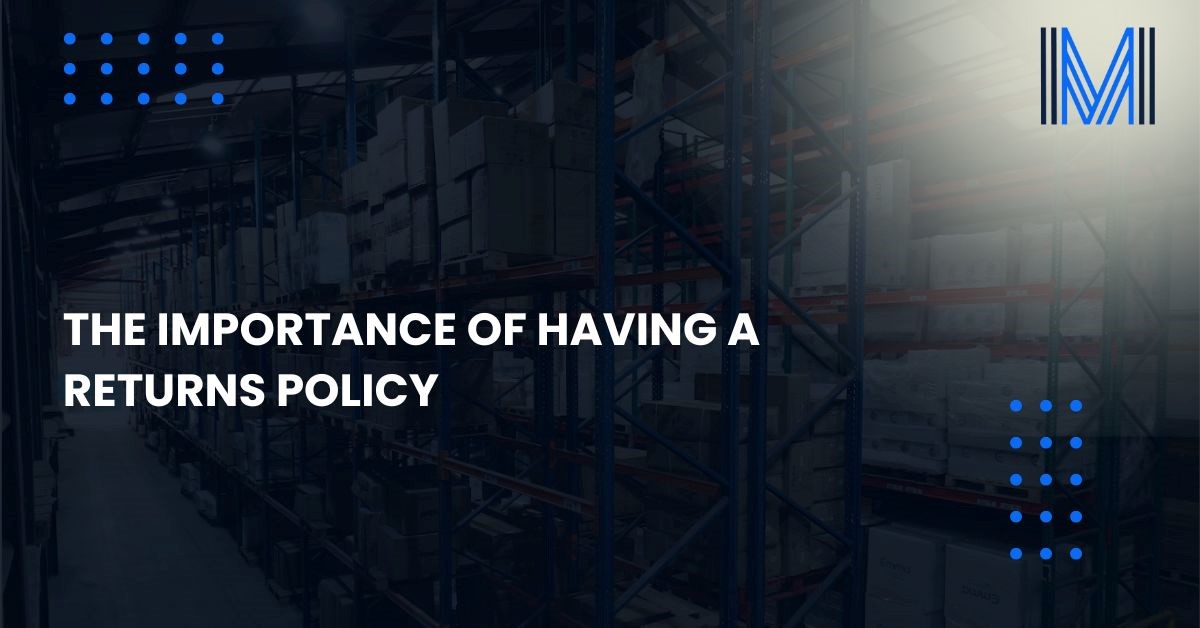23 Feb

In the fast-paced world of eCommerce, a well-crafted returns policy isn’t just a necessity—it’s a competitive advantage. When customers know they can return a product hassle-free, they shop with confidence, leading to increased sales and loyalty. As customer expectations evolve, having a transparent, efficient, and customer-focused returns process can make or break an eCommerce business.
How Returns Impact Your eCommerce Business
The way an eCommerce business handles returns has a direct impact on whether customers will come back. In fact, 67% of shoppers check the returns policy before making a purchase (Invespcro). This means that offering a straightforward and customer-friendly policy is critical to business success.
Moreover, 92% of consumers say they will purchase from a business again if the returns process is easy, and 79% of consumers prefer free returns. These statistics underscore the importance of making returns as seamless as possible. Not offering a clear returns policy can lead to lost sales and damage to your brand’s reputation.
Returns, while often seen as a headache, present an opportunity to increase customer retention and loyalty when handled correctly.
Common Reasons for Returns in eCommerce
It’s no surprise that returns are common in eCommerce, where customers can’t see, touch, or feel the items before purchasing. Let’s explore the top reasons why customers return their orders:
- Wrong item received (23%)
- Item didn’t meet expectations (22%)
- Defective or damaged item (20%)
- Delivery issues (26%)
Understanding these reasons can help businesses implement solutions to reduce the frequency of returns.
How to Prevent Returns: Actionable Strategies

While returns are inevitable, there are actionable strategies businesses can adopt to reduce return rates and the costs associated with them.
1. Preventing Returns Due to Receiving the Wrong Item
Receiving the wrong item can be frustrating for both the customer and the business. However, there are several steps that can be taken to prevent this from happening:
- Optimize Warehouse Organization: Ensure all items are stored in clearly designated locations to streamline the picking and packing process. This reduces the chances of the wrong item being sent.
- Utilize SKUs: Implementing SKU (Stock Keeping Unit) systems allows warehouse staff to easily identify products, minimizing the risk of dispatching the wrong item.
2. Reducing Returns Due to Damaged or Defective Goods
Damaged or defective goods can occur for a variety of reasons, including inappropriate packaging, damage during transit, or faulty products. Here’s how to address them:
- Enhance Packaging: Invest in high-quality packaging materials that are suitable for the product. This can prevent damage during transit. Use protective fillers for fragile items and ensure all boxes are appropriately sized.
- Quality Control: Implement a rigorous quality control process before items leave the warehouse. This ensures customers aren’t receiving defective products.
- Work with Reliable Couriers: If damage during transit is a recurring issue, it may be time to evaluate your courier partners. Choose reliable, trusted couriers to ensure safe deliveries.
3. Preventing Returns Due to Product Not Meeting Expectations
Customers often return items because they don’t match their expectations. This is common when shopping online, where customers can’t physically interact with products. To minimize this:
- Provide Accurate Product Descriptions: Ensure product descriptions are clear, accurate, and detailed. Avoid any misleading language that might cause customer disappointment.
- Use High-Quality Images: Provide multiple, high-resolution images of the product from different angles. Include videos or interactive 3D views where possible to give customers a better sense of the item.
- Include Datasheets: For technical products, including datasheets and detailed specifications can help customers make informed decisions.
4. Addressing Returns Due to Delivery Issues
Delivery issues, such as incorrect addresses or slow service, are a common cause of returns. Here’s how you can minimize them:
- Ensure Accurate Address Input: Implement address verification software to reduce the likelihood of incorrect addresses. This ensures deliveries reach the right destination.
- Offer Reliable Delivery Services: Partner with trusted, fast couriers who can offer same-day or next-day delivery options to meet customer demands. Customers expect speed and accuracy, and failing to deliver on this can lead to frustration and returns.
Outsource a 3PL Fulfillment Service for Returns

Handling returns can be complex and costly, but it doesn’t have to be a headache. By outsourcing to a third-party logistics (3PL) fulfillment service like Meteor Space, you can streamline your returns process and improve overall customer satisfaction.
We provide tailored solutions that prevent returns caused by shipping errors and ensure that customers receive exactly what they ordered, undamaged. With our state-of-the-art warehouse and fulfillment services, we help you manage returns efficiently, ensuring minimal impact on your bottom line.
Final Thoughts
Returns don’t have to be a burden. With the right strategy, they can become an opportunity to improve customer satisfaction and loyalty. By focusing on clear product descriptions, quality control, reliable shipping, and a seamless returns process, your business can turn returns into repeat business.
At Meteor Space, we’re here to help. Our expert warehousing solutions can reduce the risks of incorrect or damaged products and ensure your returns process is as smooth as possible. Contact us today to discover how we can help you optimize your returns process and create loyal, happy customers.


